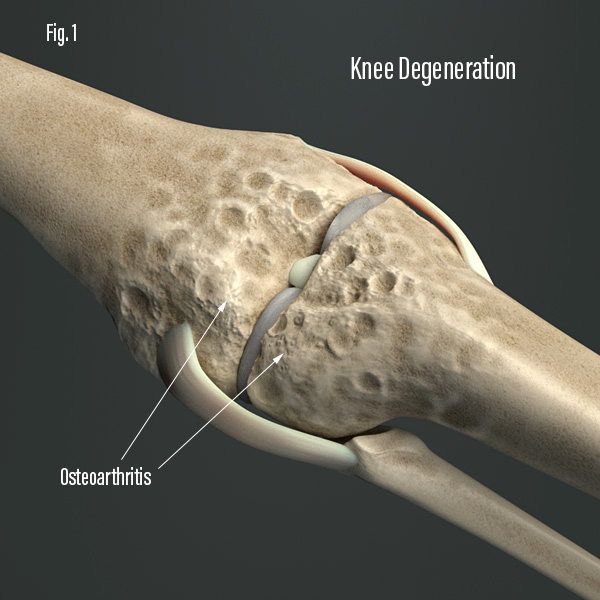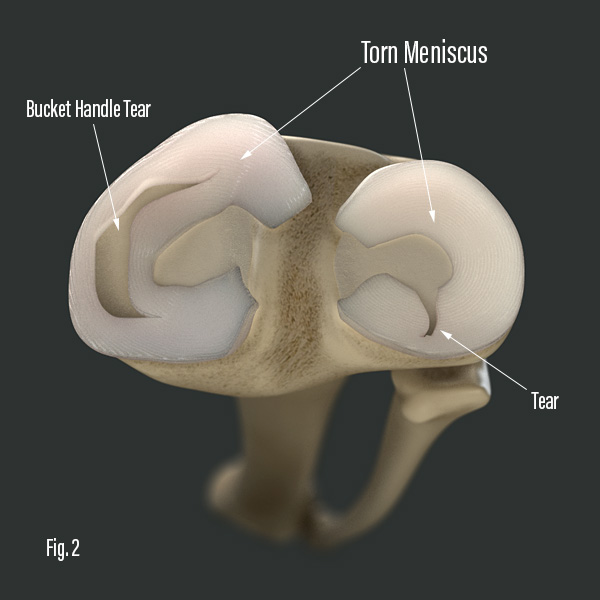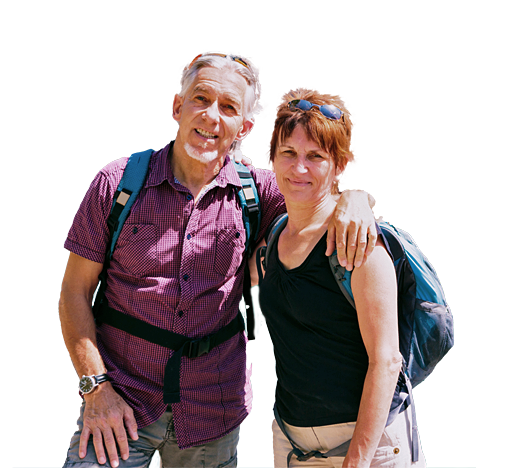
Osteoarthritis is the most common form of arthritis. Some people call it degenerative joint disease or “wear and tear” arthritis. Due to the stress administered to the knees on a daily basis from normal life and athletics it is not uncommon for osteoarthritis to develop in the knee joint.
Osteoarthritis causes the cartilage within a joint to break down and the underlying bone begins to change.(Fig. 1) These changes usually develop slowly and get worse over time. Osteoarthritis in the knee can cause pain, stiffness, and swelling. These debilitating conditions can lead to some people no longer being able to complete daily tasks or work.
Knee Decompression Therapy is believed to naturally increase Synovial Fluid inside the joint. Synovial fluid is the thick liquid that lubricates the knee joint and keeps it moving. Synovial fluid is essential to maintaining knee health.

A torn meniscus is one of the most common knee injuries. Any activity that causes you to forcefully twist or rotate your knee, especially when putting your full weight on it, can lead to a torn meniscus.
Each of your knees has two C-shaped pieces of cartilage that act like a cushion between your femur (thigh bone) and your tibia (shin bone). This cushioning cartilage is called menisci. A torn meniscus causes pain, swelling and stiffness. (Fig. 2) In some cases, a piece of broken cartilage can break free in the knee joint, causing it to lock up or hinder the knees ability to extend fully.

A knee sprain refers to torn or overstretched ligaments, the tissues that hold bones together. If you have a sprained knee, the structures within the knee joint that connect the thigh bone to the shin bone have been injured.
A knee sprain is painful and can create other problems over time, including arthritis.
The knee has four main ligaments: two that stabilize its front and back, and two that stabilize side-to-side movement.
If you are suffering from any of the conditions described above we may be able to help you with this natural non-surgical therapy. Please don't hesitate to schedule a consultation today! Call 704-573-7161 or enter your information below.

©Natural Knee Pain Relief. All rights reserved. All Rights Reserved. | Legal Notes | Privacy Policy | Visit cltspine